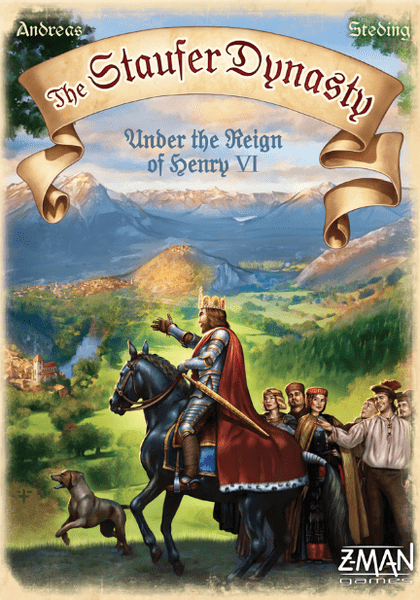The Staufer Dynasty (2014) Board Game
The Staufer Dynasty board game, designed by Andreas Steding and published by Arclight Games in 2014, takes players back to medieval times in Germany. The game is named after the legendary House of Hohenstaufen, also known as the Staufer Dynasty, which ruled the Holy Roman Empire during the 12th and 13th centuries.
Game Components of The Staufer Dynasty
How To Setup The Staufer Dynasty
Setting up The Staufer Dynasty involves several steps. First, construct a table that determines which regions will be scored each turn and where the King Pawn will be placed. Randomly draw scoring tiles for each of the 6 regions. Each player starts with 5 workers (4 Envoys and 1 Noble) and selects 3 Job cards and 6 Privilege cards from a pool of 16. The rest of the workers are kept in a general supply. The turn order for the first round is set based on a fixed pattern, which varies depending on the number of players.
Gameplay Mechanics and Game Objective
Player Experience
The Staufer Dynasty offers a rich and complex gaming experience despite its relatively short playtime. The setup, while fiddly and finicky, sets the stage for a smooth and quick game flow. Players must strategically manage their workers, treasure chests, and Privilege cards to optimize their scoring opportunities.
Pros
Cons
Personal Thoughts on The Staufer Dynasty
The Staufer Dynasty is ideal for experienced board game enthusiasts who appreciate complex strategies and multiple layers of gameplay. It is not a game for beginners due to its intricate setup and numerous rules. However, for those who enjoy deep strategic games that can be completed in a relatively short time, The Staufer Dynasty offers a highly satisfying and challenging experience.
We are supported by our audience. When you purchase through links on our site, we may earn an affiliate commission, at no extra cost for you. Learn more.

